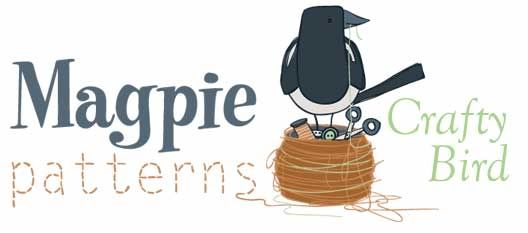This is the third embroidery tutorial installment from Nicole Vos van Avezathe of Follow the White Bunny. For a review you can find the first installment here, and the second here. Nicole is offering a free embroidery pattern on her blog today, so be sure to stop by and download your copy!
Iron on patterns
If you are using an iron-on design just follow the instructions that came with it. Be careful not to shift you pattern (paper) while you are transferring it to the fabric or you will end up with a blurry image.
Do-it-yourself iron on patterns
Sometimes people use the print out of a (non iron on) pattern itself to transfer, just like it was an iron on. As far as I know this only works with laser printers and it might be a good idea to try it on a scrap of fabric first! Personally I have not managed to get very clear transfers with this method but it is worth a try. There are lots of other ways to transfer patterns to fabric though.
Carbon paper
Carbon paper is another option and can especially be helpful when transferring to dark fabrics. You put the carbon paper on top of your fabric and the paper pattern on top of that. By tracing the pattern and thus applying pressure with a pen or a stylus (a special tool that looks a bit like an iron pen) the carbon transfers to the fabric.
Image transferred with a water-soluble marker:
{Photo courtesy of Nicole Vos van Avezathe}
Pens and markers
You can also use either a water soluble fabric marker or an iron-on transfer pens or pencils to transfer your pattern. Both are available in craft stores.
If you go for the water soluble marker you will need some sort of light box. I don’t have one so I usually use my window as light box (this only works during the day of course). Lately, however, I’ve been using a clear empty storage tub with a bed lamp underneath as a “light box.” It looks a bit odd but hey, it’s cheap and it works! Stick your printed pattern to a window or put it on a light box. You can choose to use the pattern as it is printed or turn the paper around and reverse the image. Next, put your fabric on top of the print (I always use sticky tape to keep it in place) and start tracing with your water solvable pen. It’s easy! You can remove the water soluble pen with water after you have finished stitching. Sometimes, for more detailed patterns, I use a no. 2 pencil. But be careful because the pencil marks can be difficult to wash out.
Image drawn with a transfer pencil:
{Photo courtesy of Nicole Vos van Avezathe}
Iron-on pens and pencils are easy to use too. Read the instructions of your pencil or pen and use accordingly. With this method you will trace the printed pattern with your pen or pencil. The ink or pencil marks will be transferred to your fabric through the heat of your iron. Just like an iron-on pattern. Keep in mind that the image you produce with this method will be a reversed version of the actual pattern.
Now that we have transferred the image, the actual stitching can begin!
Thank you Nicole! Happy stitching everyone!














No comments:
Post a Comment